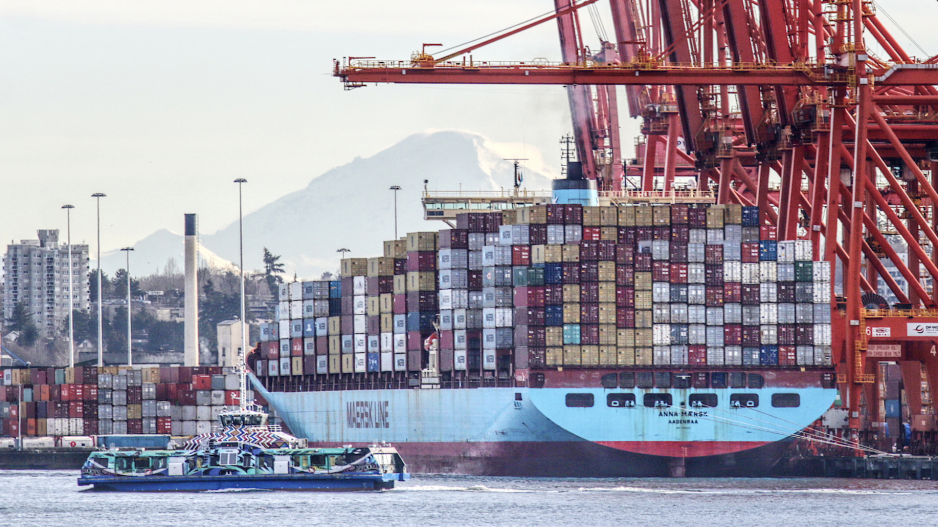After a jump in containerized shipping volumes between 2023 and 2024, North America’s West Coast ports are seeing cargo activity shift amid uncertainty caused by sweeping U.S. tariffs and global responses to aggressive trade action.
U.S. President Donald Trump’s 90-day reprieve from 25-per-cent tariffs on Canadian and Mexican imports initially produced a short-lived cargo surge, as American importers looked to stock their shelves.
That grace period is set to expire July 9.
Maritime and shipping and consultancy firm Drewry said June 12 that, in the previous four weeks, its container index increased 59 per cent as Trump’s pause on import tariffs led to a resumption of U.S.-bound traffic after an initial collapse of transpacific volumes.
However, Drewry cautioned, forecasts expect the supply-demand balance to weaken again.
“The volatility and timing of rate changes will depend on the outcome of legal challenges to Trump’s tariffs and on capacity changes related to the introduction of the U.S. penalties on Chinese ships, which are uncertain,” it said.
The consultancy had earlier warned that Trump’s tariff war could cut global container volume by one per cent this year.
Indeed, Vancouver container traffic did drop after Trump’s initial announcement, falling by over 23 per cent, from nearly 330,000 containers in January to nearly 252,000 in February. That figure recovered somewhat to reach close to 318,000 in March.
Despite some swings and uncertainty, activity at the Port of Vancouver is up so far this year.
“Container throughput at Port of Vancouver terminals has increased in 2025, with year-to-date volumes through May up six per cent — including containerized imports in May up nearly 14 per cent,” a statement from the port said.
It also said forecasts for the coming weeks indicate container volumes will remain consistent with seasonal norms.
“It is worth noting that the overwhelming majority of container traffic moving through the port is Canadian trade, and not directly affected by U.S. tariffs,” said the port, adding that the situation in the U.S. “remains both fluid and uncertainty.”
Gains so far this year at Port Metro Vancouver build on a five-per-cent increase in cargo volumes from 2023 to 2024. Overall, the port handled 158 million tonnes of cargo last year, up from 150 million tonnes in 2023.
China remains the port’s principal trading economy — followed by Japan, South Korea, India and the U.S.
The Prince Rupert Port Authority, meanwhile, saw 23.1 million tonnes of cargo move through the Port of Prince Rupert in 2024, a one-per-cent decline compared to 2023.
Container volumes rose five per cent but the port said volumes were negatively impacted by the realignment of carriers’ transpacific trade routes, two labour disruptions, and the brief suspension of rail service due to wildfires that paused terminal operations.
South of the border, Seattle and Tacoma port facilities make up the Northwest Seaport Alliance, which handled 3.3 million 20-foot equivalent units (TEUs) in 2024, up 12.3 per cent from three million TEUs in 2023.
The possible imposition of tariffs drove strong imports, the alliance said in its annual report.
It added that uncertainty regarding contract negotiations with organized labour and Canadian railroads also contributed to diverted cargo.
In Los Angeles, home of North America’s leading container port, executives anticipate U.S. tariffs to impose downward pressure on cargo volumes.
“Moving forward — at least for the short term — we will see a softening of global trade during this period of elevated tariffs and uncertainty,” Port of Los Angeles executive director Gene Seroka said back in May.
Los Angeles’ major trading partners are China, Japan, Vietnam, South Korea and Taiwan.




